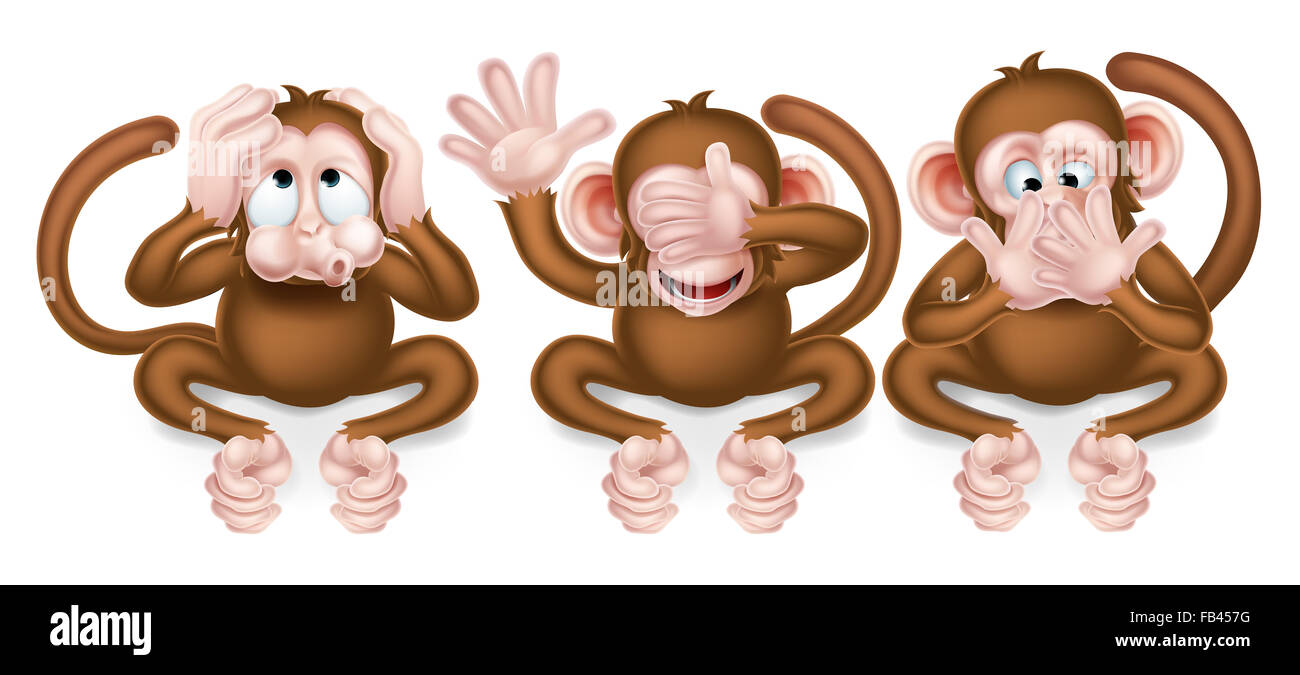
The three wise monkeys, hear no evil, see no evil, speak no evil Stock Photo Alamy
Gandhi's Three Monkeys is a series of sculptures created in 2008 by Indian artist Subodh Gupta that portrays three heads in different types of military headgear. The sculptures recall a visual metaphor from India's famous champion of peace, Mahatma Gandhi, of the "Three wise monkeys", representing the principle "see no evil, hear no evil, speak no evil".
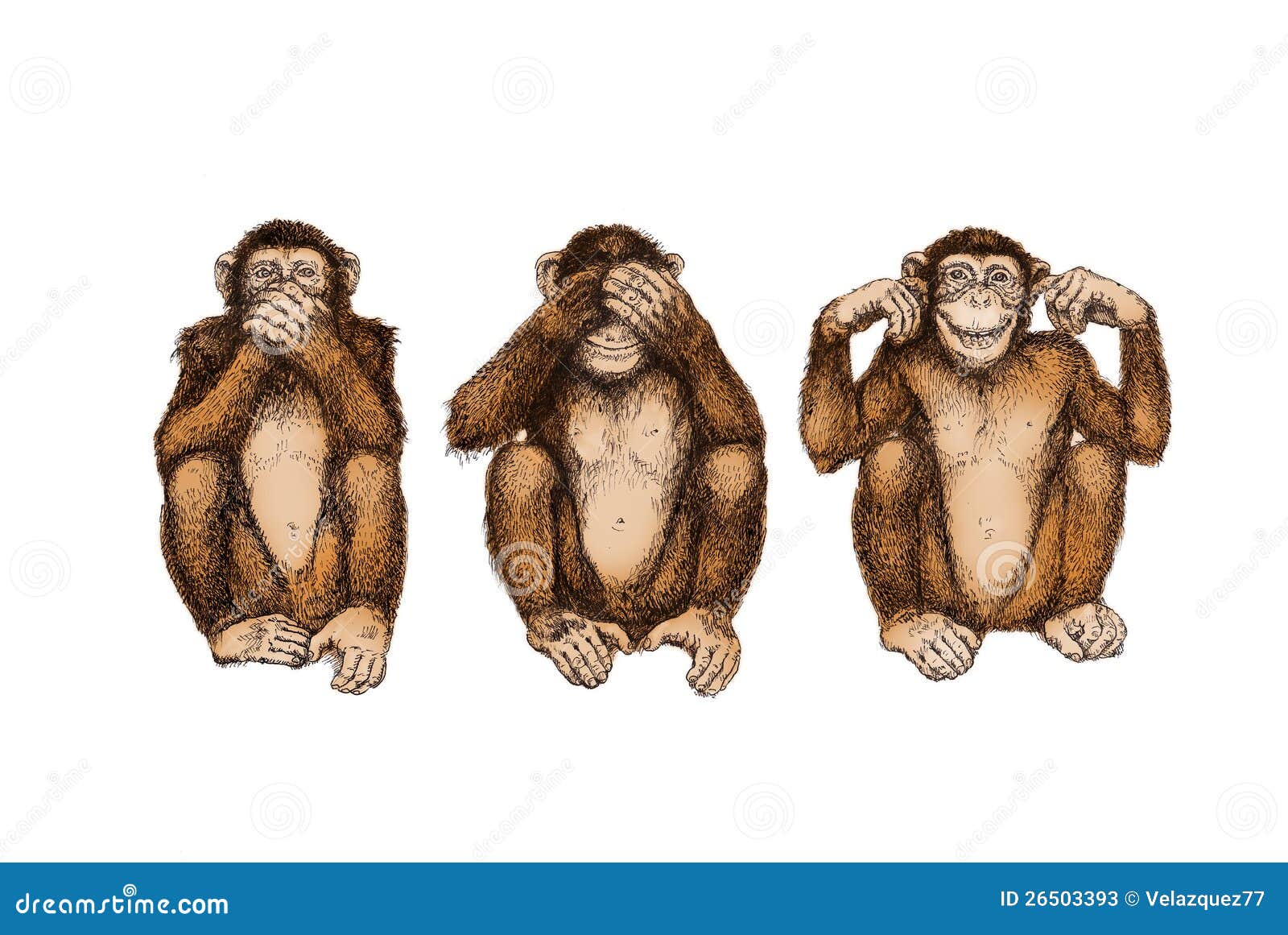
Three Wise Monkeys See Hear Speak No Evil Stock Illustrations 176 Three Wise Monkeys See Hear
Many of us are familiar with Three wise monkeys representing Buddhist religion principle of non-doing three evils. In particular, "see no evil", "hear no evil", and "do not speak of evil". Monkeys Mi-zaru, Cica-zaru and Yves-zaru "hide" from evil, closing the mouth, eyes and ears. And we often meet their images in sculptures and.
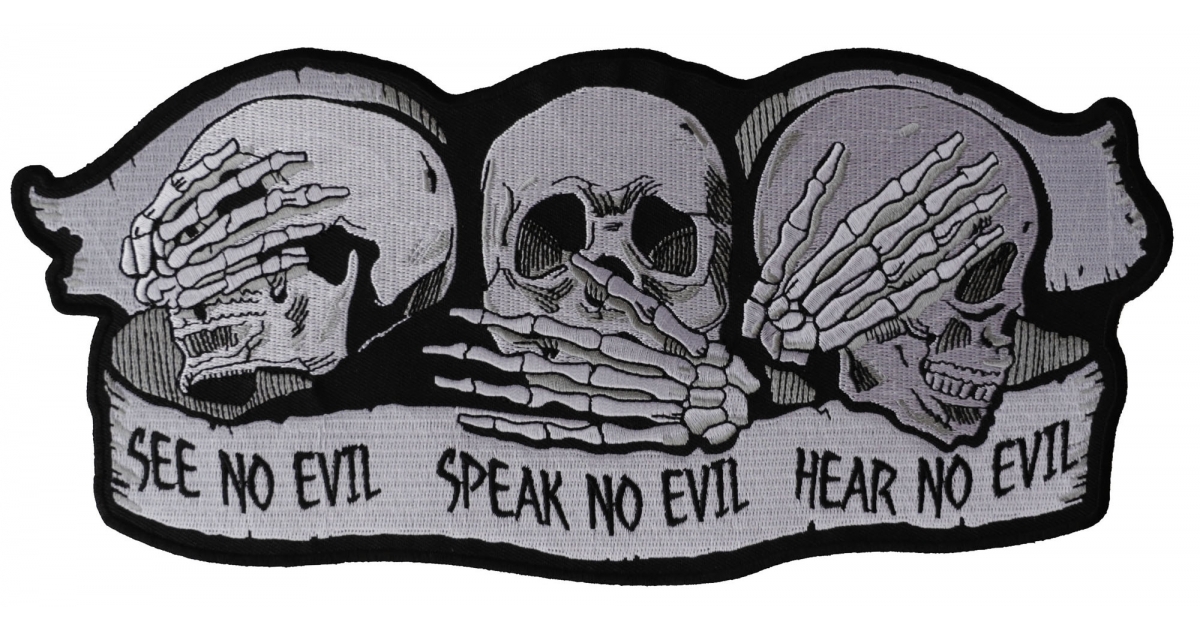
Hear No Evil, See No Evil, Speak No Evil Logo Design Contest LogoTournament
The phrase "see no evil, hear no evil, speak no evil" is often depicted in pop culture, usually signifying a moral stance against negativity or wrongdoing. Let's explore some instances: "See No Evil, Hear No Evil" is a 1989 comedy film directed by Arthur Hiller. The film revolves around a blind man and a deaf man who unwittingly becomes.
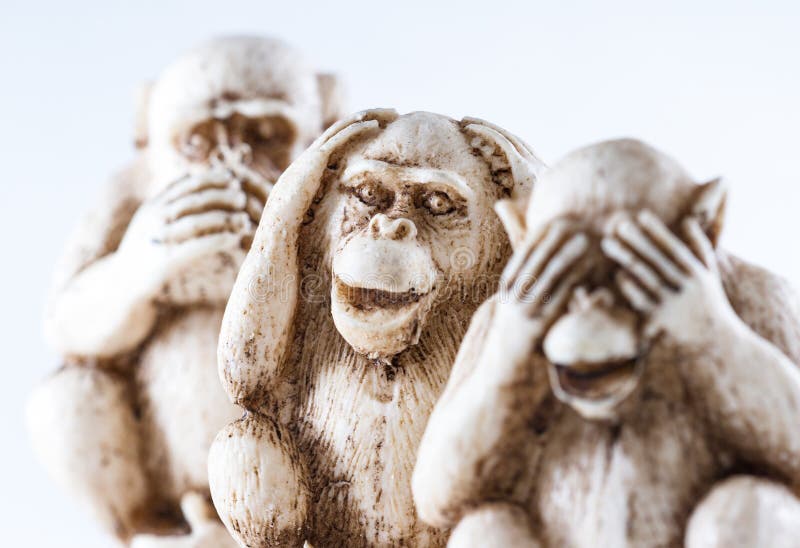
See No Evil, Hear No Evil, Speak, No Evil Stock Image Image of small, cover 69325605
The Three Wise Monkeys is a Japanese visual representation of the proverb "See No Evil, Hear No Evil, Speak No Evil". The monkeys are depicted as Mizaru, who covers his eyes to "see no evil", Kikazaru, who covers his ears to "hear no evil", and Iwazaru, who covers his mouth to "speak no evil". These monkeys are not just individual sculptures.
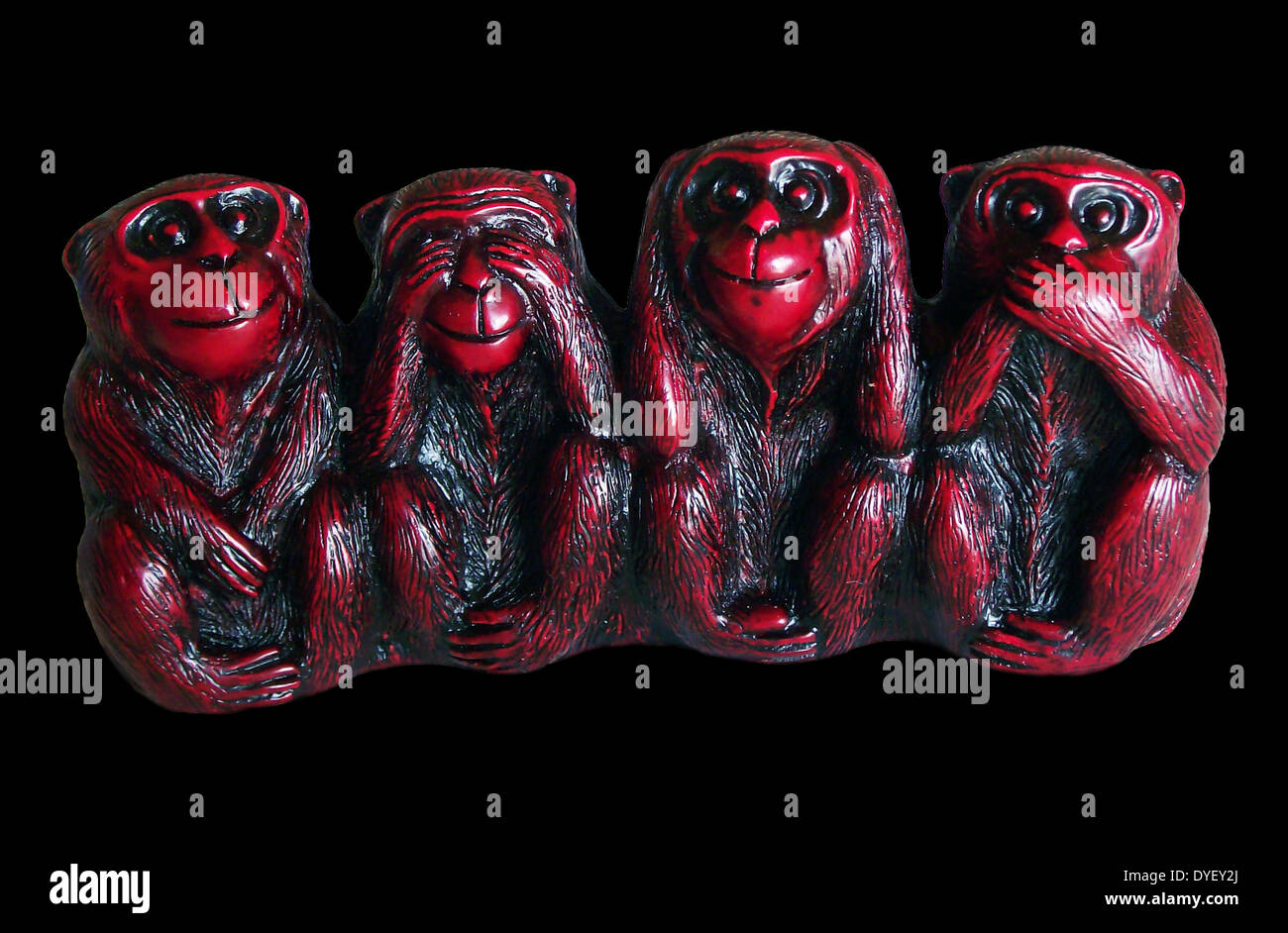
The Four Wise Monkeys Do no evil; See no evil; Hear no evil; Speak no evil Stock Photo Alamy
He seems to be blocking the sight of evil. The "hear no evil" monkey Kikazaru (キカザル) has his hands over his ears. This action helps block out the sound of evil. The "speak no evil" monkey is Iwazaru (イワザル) covers his mouth with his hands. This monkey represents the idea of not saying bad or negative things.

Hear No Evil See No Evilspeak Stock Vector (Royalty Free) 101903395
The Three Wise Monkeys, See No Evil, Hear No Evil, and Speak No Evil, are often known these days as popular emojis. Before that they were pop culture cartoons and figurines (and one of the few things Gandhi owned). But before all that they were part of a 17th-century carving at the Shinto Tōshō-gū Shrine in Nikkō, Japan. The monkeys are also part of Buddhist legend, Kōshin practice, and.

Hear No Evil See No Evil Speak No Evil HighRes Stock Photo Getty Images
In English, this expression is generally used in reference to those who choose to turn a blind eye to wrongdoings; but its original meaning, rooted in Confucianism, is to teach prudence and the importance of avoiding evil. It is believed that Buddhist monks brought the expression from India to Japan by way of China around the 8th century. In.
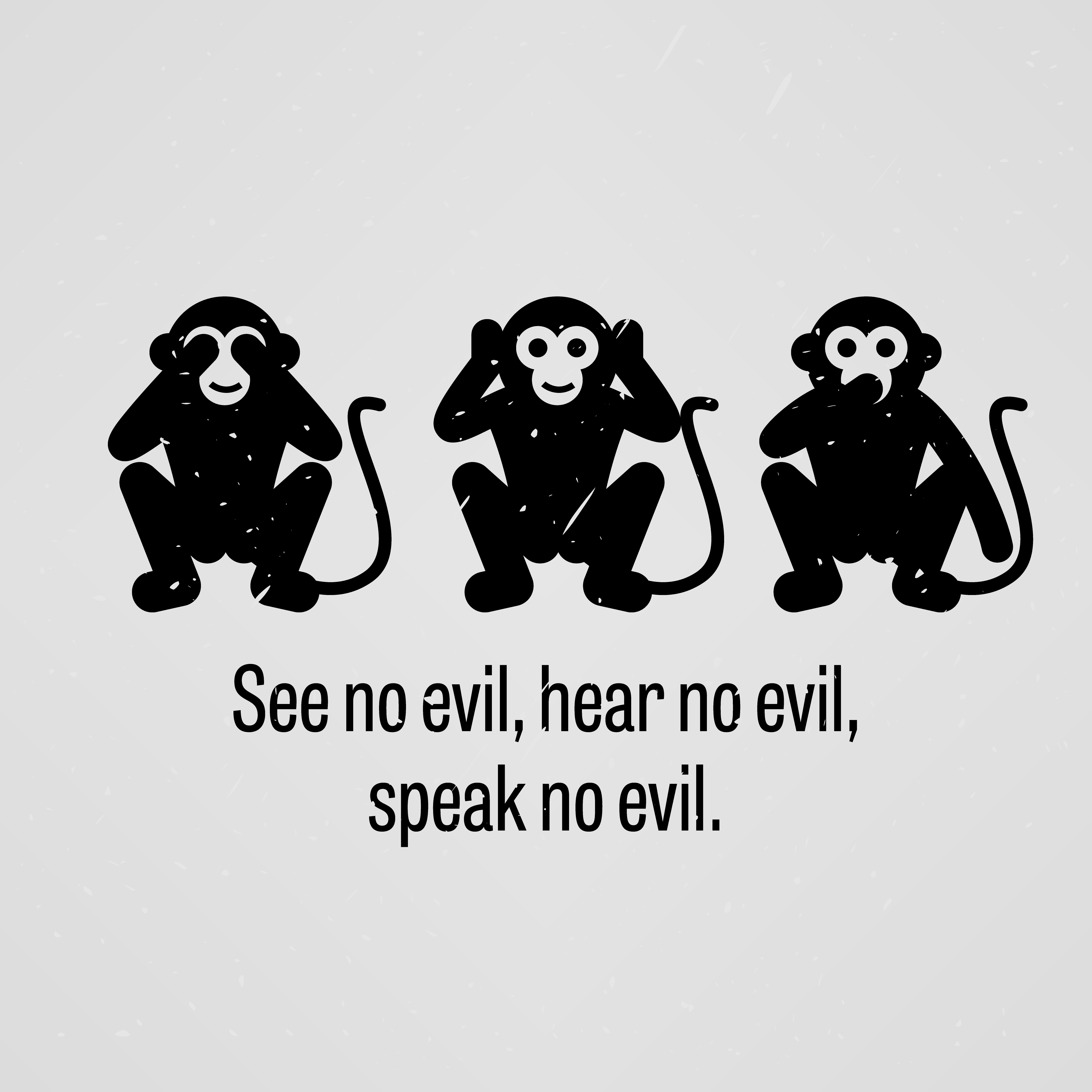
See no Evil, Hear no Evil, Speak no Evil. 364685 Vector Art at Vecteezy
The proverb see no evil, hear no evil, speak no evil is derived from a work of art. A seventeenth century carving above the door in Tōshō-gū shrine in Nikkō, Japan depicts three monkeys-one with his hands covering his eyes, one with his hands covering his ears, and one with his hands covering his mouth. The original meaning of the.

See no evil hear no evil speak no evil robot Vector Image
A cultural symbol originating in Japan, the three wise monkeys—one covering his eyes, one his ears, and one his mouth—are known by their names Mizaru, Kikazaru, and Iwazaru. They symbolize the proverbial saying, "See no evil. Hear no evil. Speak no evil". Surprisingly, their Japanese names are also a play on words.
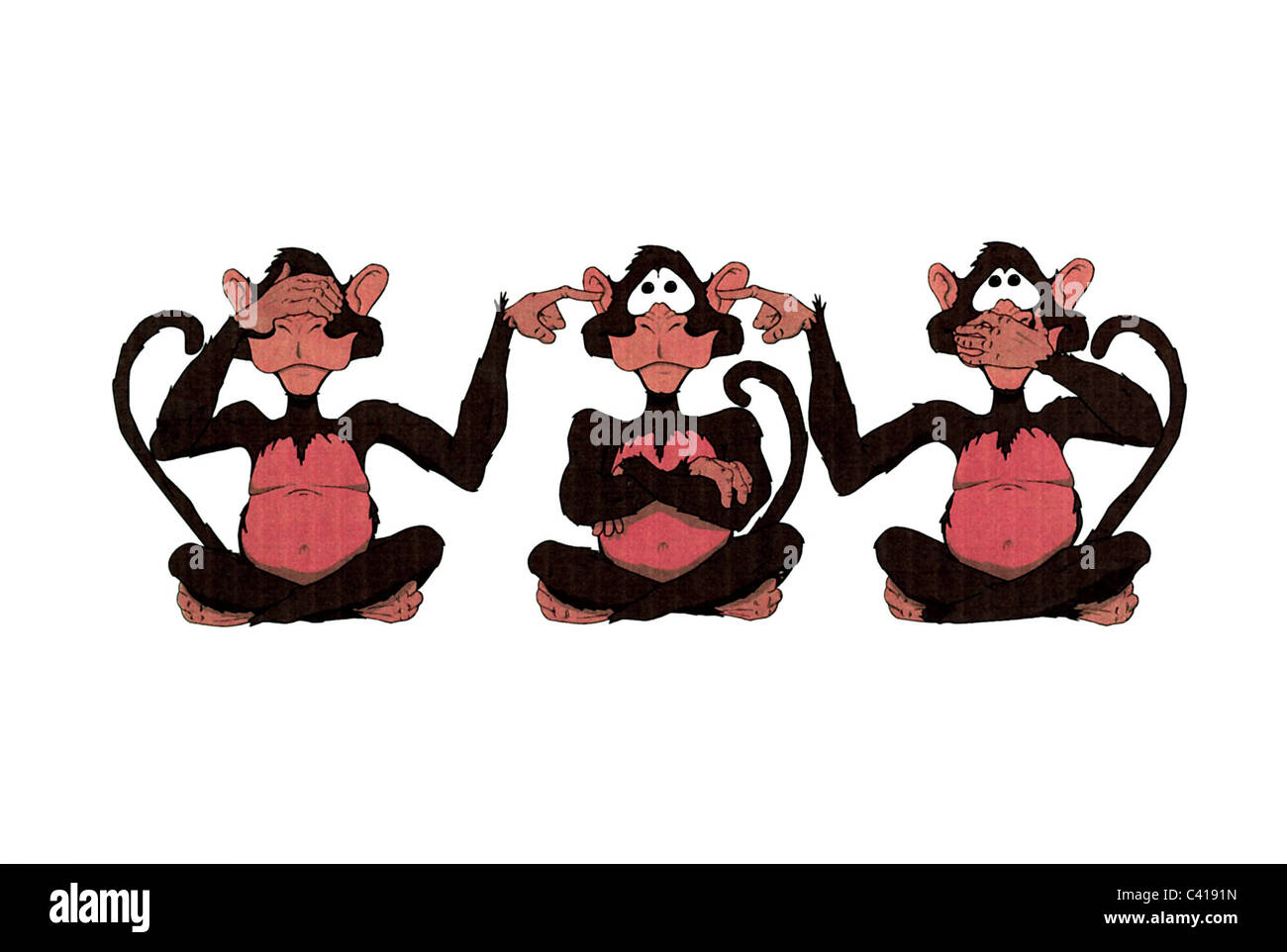
symbols, three wise monkeys, "see no evil, hear no evil, speak no evil", AdditionalRights
See no evil, hear no evil, speak no evil. It's a phrase seemingly old as time itself, and it's one horror filmmakers have loved to pick apart since the introduction of the motion picture. The.
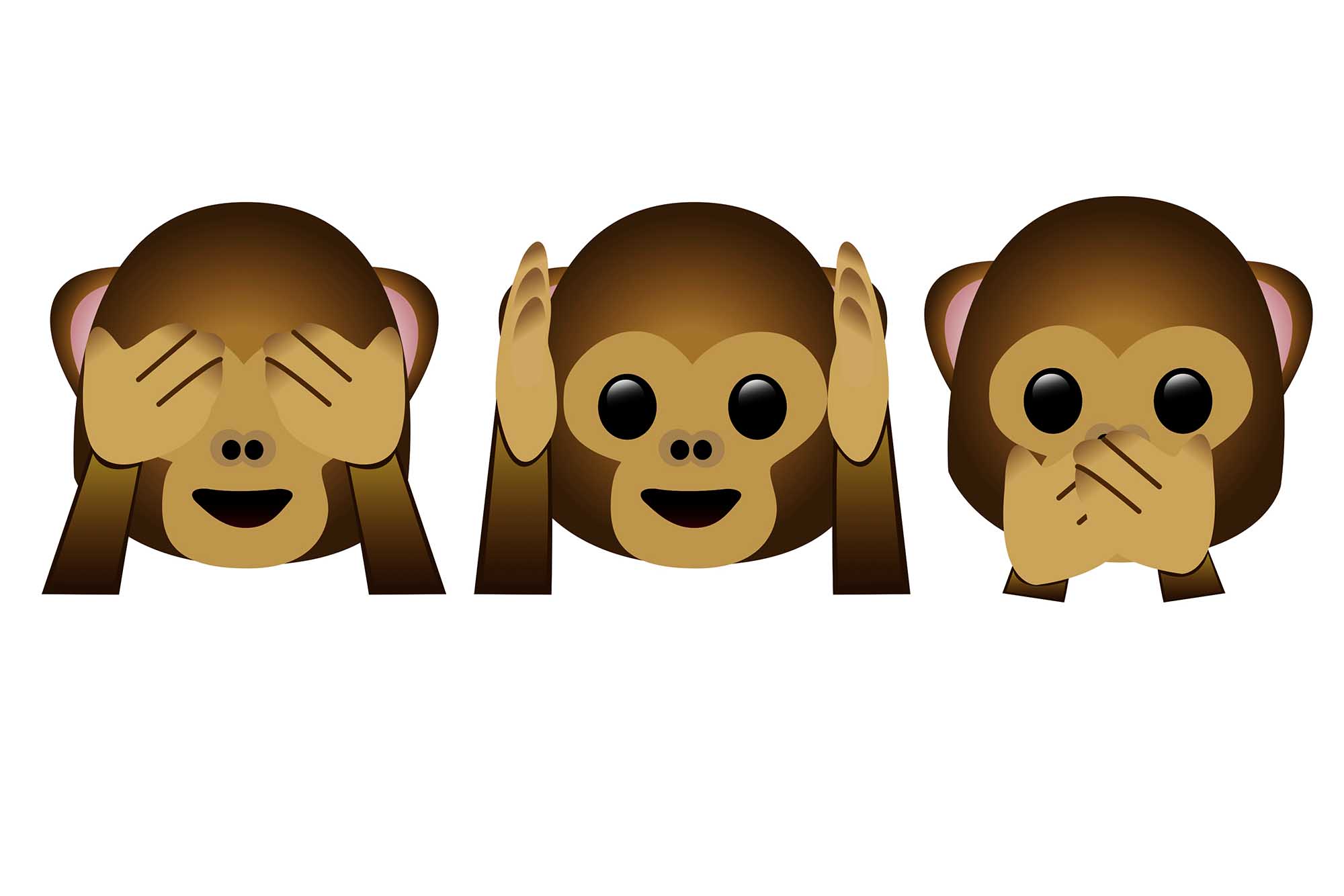
Hear No Evil See No Evil Monkey Emoji Art Print
The protagonists are Kikazaru, the monkey that doesn't hear, Iwazaru, the monkey that doesn't speak and Mizaru, the monkey that doesn't see. These three unique creatures were sent by the gods as observers and messengers. In other words, t hey were to testify to the good and evil of humanity and report back to the deities.
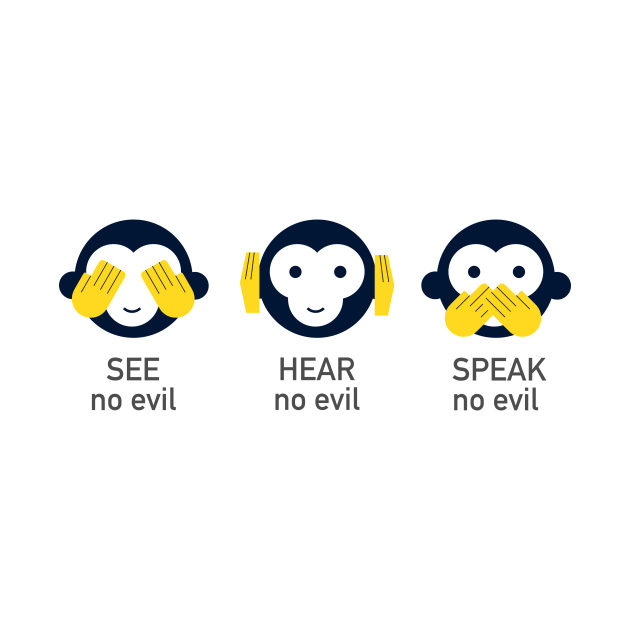
See no evil, Hear no evil, Speak no evil, Monkey Cartoon Funny TShirt TeePublic
The ancient Japanese proverb "see no evil, hear no evil, speak no evil" was popularized in the 17th century as a pictorial Shinto maxim, carved in the famous Tōshō-gū Shinto shrine in Nikkō, Japan.. Three Wise Monkeys illustrated the idea of protecting one's self from unsavory or challenging behavior, thought, or language.
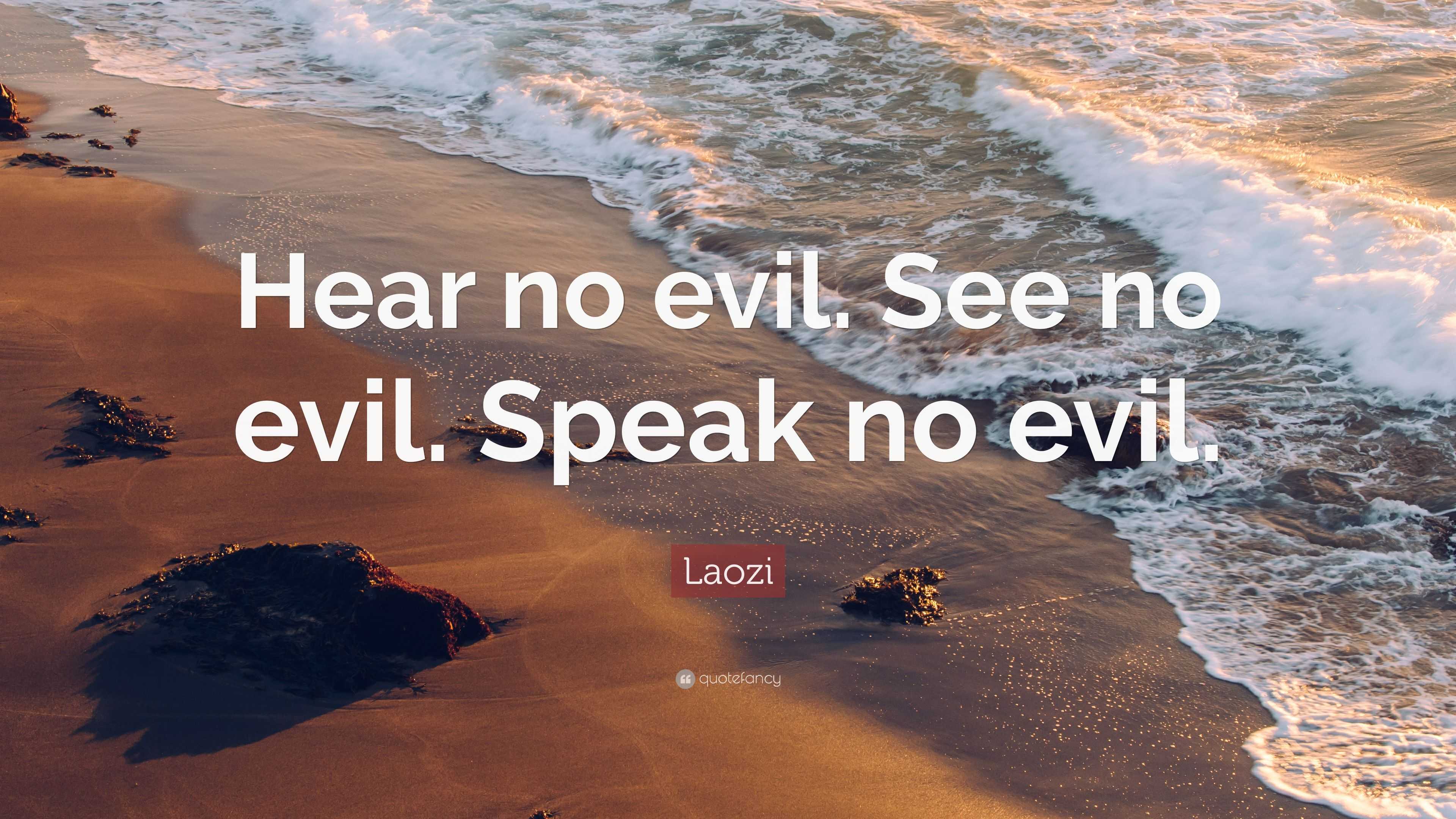
Laozi Quote “Hear no evil. See no evil. Speak no evil.”
It calls for avoiding actions that cause harm to oneself or others, aligning with the idea of "do no evil.". 4. Right Livelihood. Right Livelihood emphasizes engaging in honest, ethical professions that do not harm others. It encourages individuals to earn a living through virtuous means, resonating with the concepts of "see no evil.

Speak no evil Hear no evil See no evil II de Editors Choice en póster, lienzo y mucho más
See no evil, hear no evil, speak no evil. A Buddhist/Shinto proverb that some sources maintain is Japanese, while others maintain it is Chinese and attribute it to Confucius, because a similar concept is quoted in the Analects of Confucius, which date from the 4th or 2nd century BC, "Look not at what is contrary to propriety; listen not to what is contrary to propriety; speak not what is.

Hear no evil see no evil speak no evil monkeys CustomDesigned Illustrations Creative Market
Made by the sculptor Hidari Jingoro, the carving is a pictorial maxim of the phrase, "See no evil, hear no evil, speak no evil". It is believed that the maxim came to Japan from China in the 8th century, as a part of a Tendai-Buddhist philosophy. In the middle school of this sect, they represent the three dogmas which symbolize a person's.
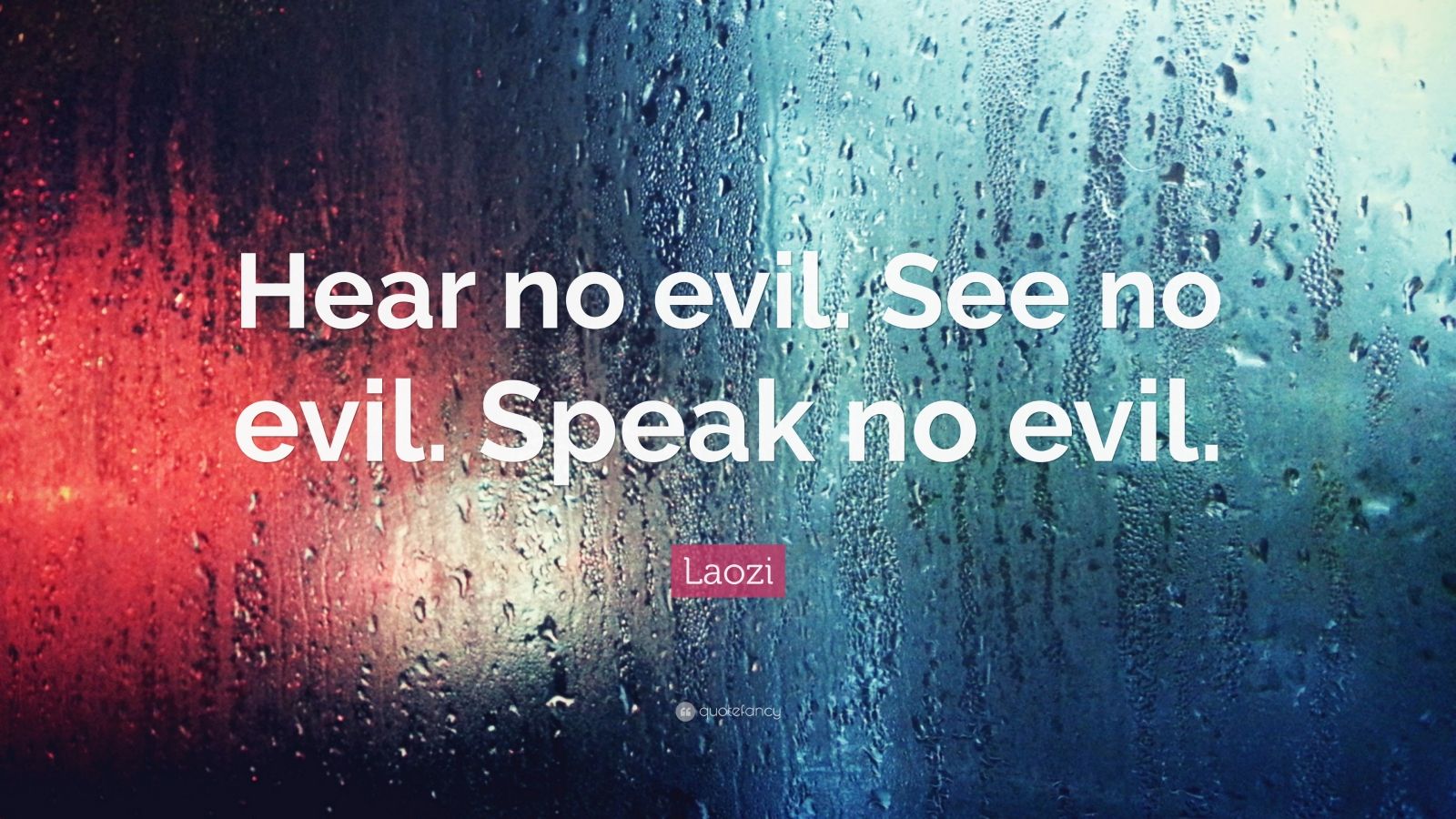
Laozi Quote “Hear no evil. See no evil. Speak no evil.” (9 wallpapers) Quotefancy
Definition of see no evil, hear no evil, speak no evil in the Idioms Dictionary. see no evil, hear no evil, speak no evil phrase. What does see no evil, hear no evil, speak no evil expression mean? Definitions by the largest Idiom Dictionary.
- Quantos Graus Está No Deserto Do Saara
- Versículo Que Fala De Milagre
- Paul Lieberstein Out Of Office
- O Que Faz Um Investigador Da Policia Civil
- Qual A Cor De Olho Mais Raro Do Mundo
- Uva Do Mato Pode Comer
- Sobre As Aguas Trazendo A Arca
- Quem Foi O Pai De Ariano Suassuna
- Zelda Minish Cap Pt Br
- Letra De Chitãozinho E Xororó Brincar De Ser Feliz